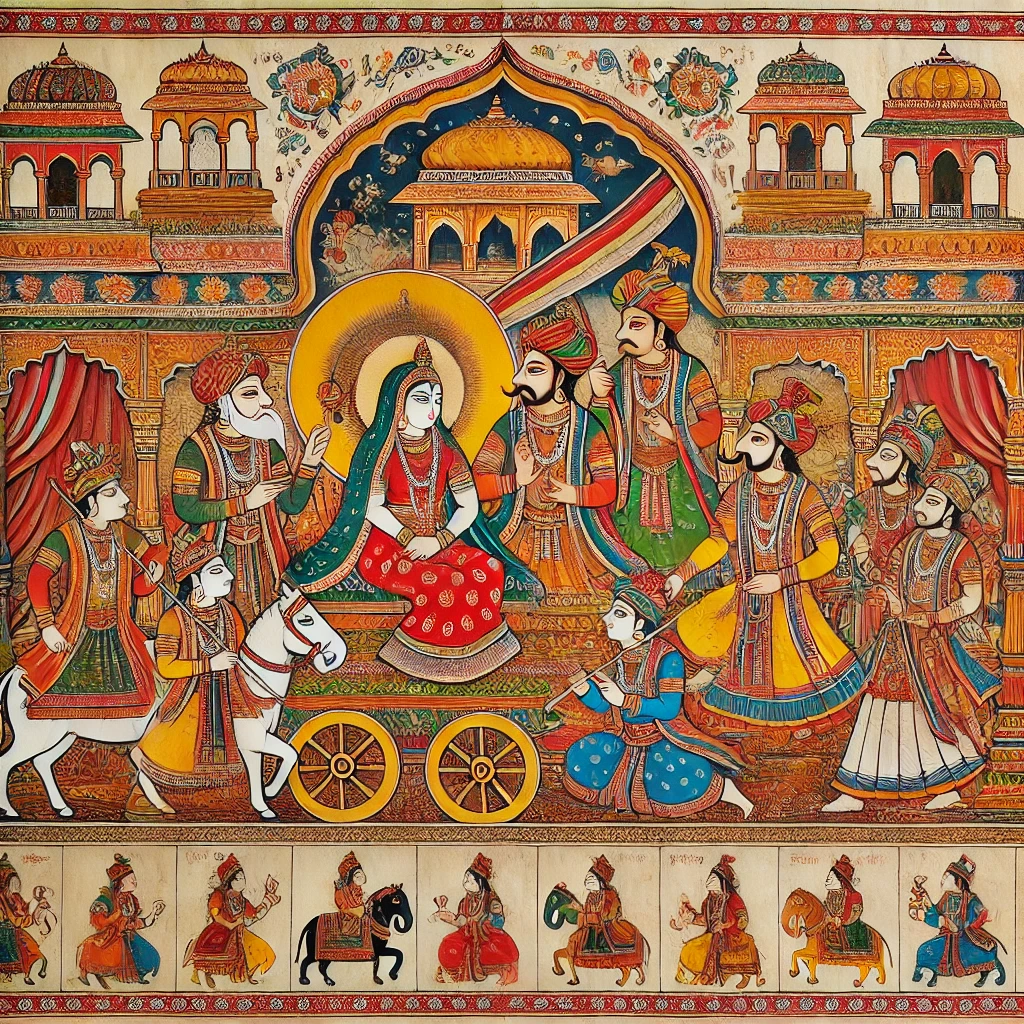Origin: Originating around 700 years ago in Shahpura near Bhilwara, Rajasthan, the Phad paintings are integral to the vibrant performances of the Rabari tribe’s balladeers, the bhopa and bhopi. Armed with a two-stringed instrument called the ravanhatta, they traverse villages, using Phad paintings as visual aids to dramatize tales from the Ramayana, Hanuman Chalisa, and other mythologies. Passed down through generations, the performance of ‘Pabuji ki phad’ is a cultural legacy for the bhopas. The scrolls embody the historical and spiritual traditions of Pabuji, showcasing his exploits and contributing to the epic’s mythic heritage. The smaller version, known as ‘phadakye,’ is a testament to the art’s adaptability and portability.
Painting Phad Scrolls: Apart from mythological tales, the Phad paintings captivate with depictions of battlefields, legendary romances, and the luxury of Indian princely states. The artists skillfully weave multiple stories into a single composition, maintaining the aesthetic integrity of each tale. Creating a Phad painting involves meticulous steps, from preparing the handwoven cloth to using colors derived from natural sources like vegetables, stones, and flowers, which adds to the allure of Phad paintings. It is noteworthy how the eyes of the deity, drawn and painted last, symbolize the awakening of the artwork as a living temple. Devotees hold Phad in spiritual reverence, adding a layer of divine significance to this folk art.
Challenges and Continuity: Despite its cultural significance and vibrancy. The Phad painting faces challenges, with fewer than twenty full-time artists practicing this intricate art form today. Consequently, although the techniques of Phad painting were selectively taught and guarded within the Joshi family, Shree Lal Ji Joshi challenged traditions to preserve the art form by establishing Chitrashala in 1960. Further, fusion with other art forms, illustrated book covers, coasters, and innovative storytelling brings new life into this ancient tradition. Efforts by artists like Kalyan Joshi have expanded the narrative scope, depicting characters beyond local deities and introducing text into the artworks.

